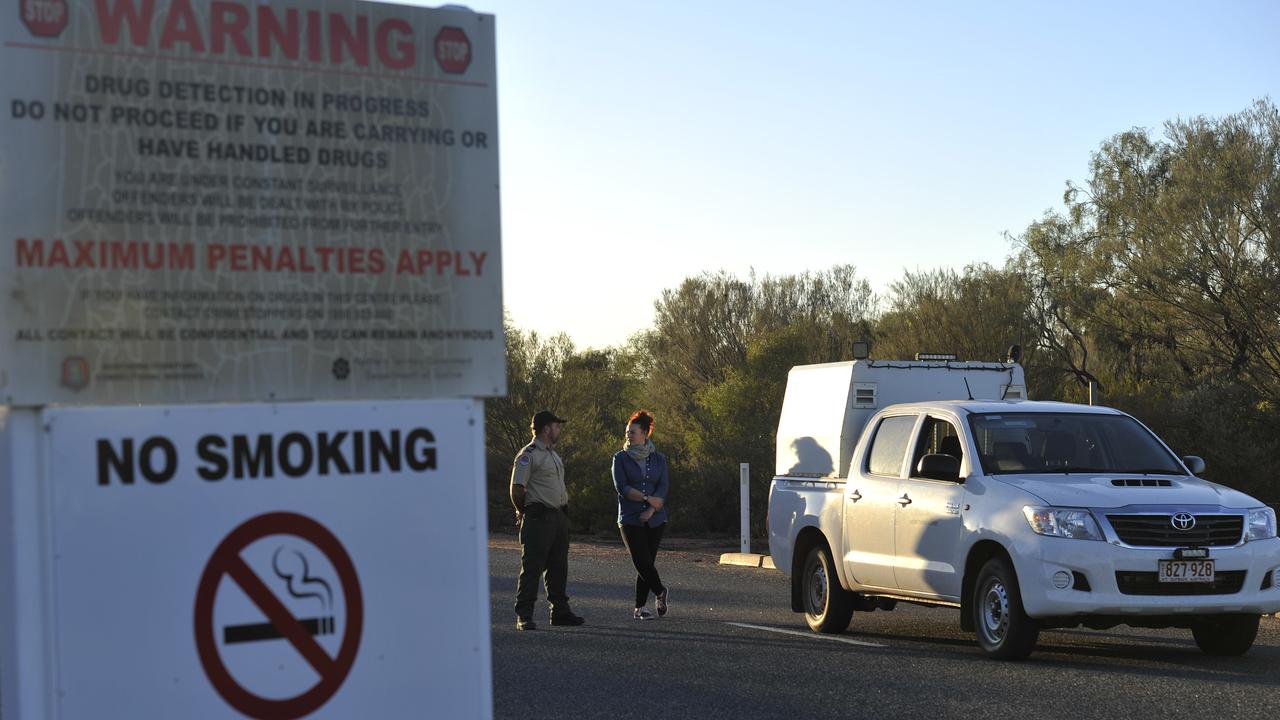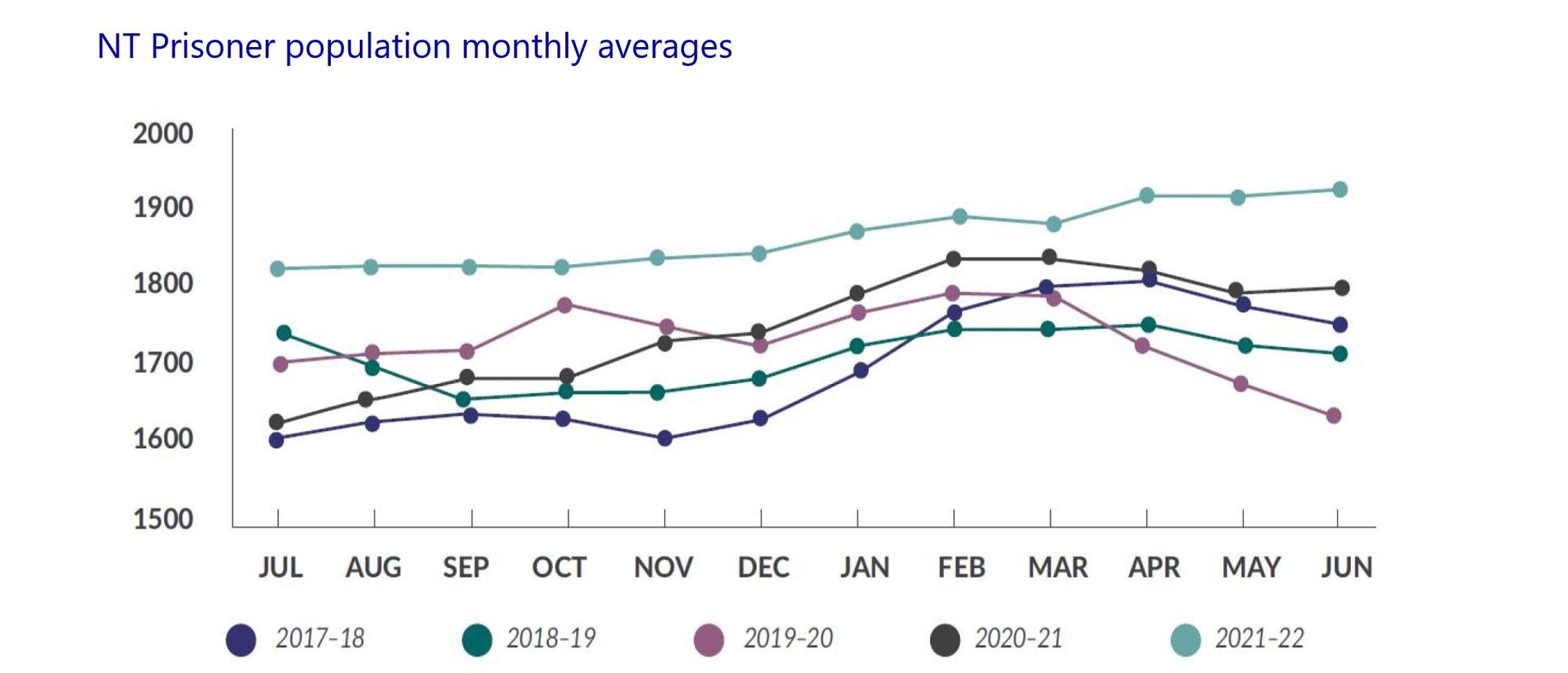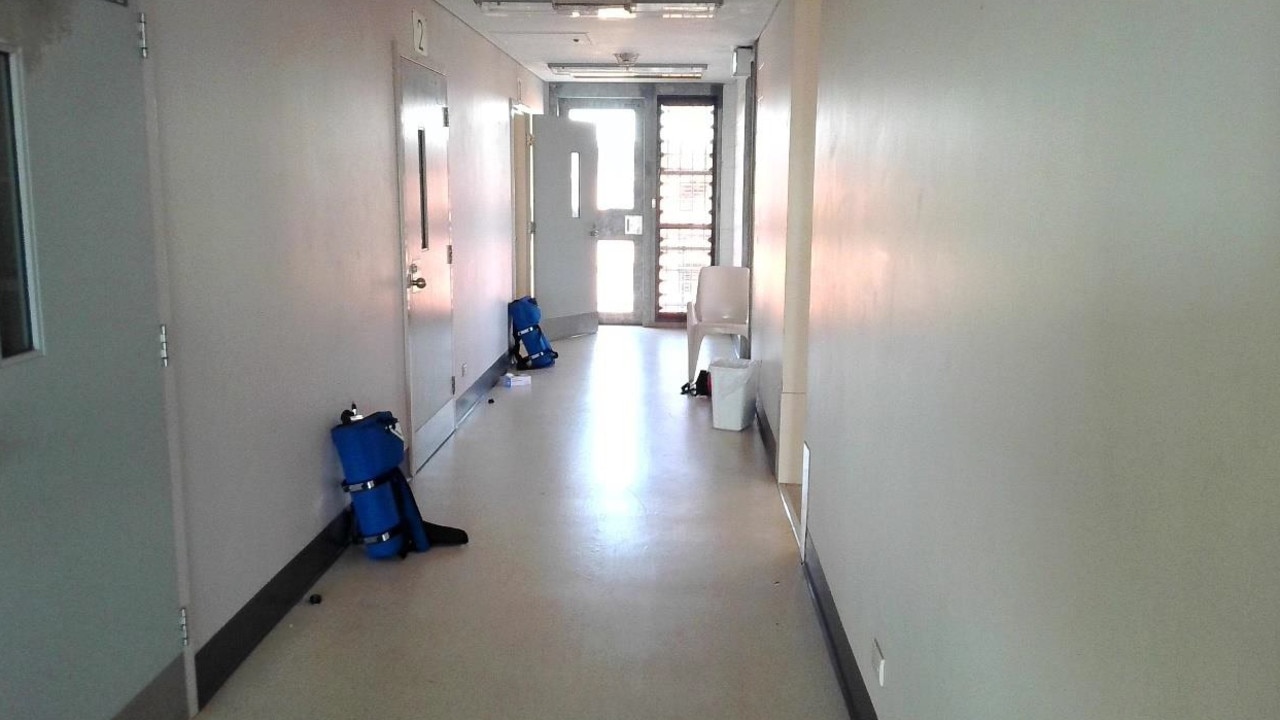5 key reforms for NT Corrections Strategic Plan 2023-26 revealed
The NT Corrections Department has outlined the five areas of reform needed to fix the Territory’s embattled prison system. See the plan here.

News
Don't miss out on the headlines from News. Followed categories will be added to My News.
The Corrections Department is setting an ambitious three-year target to reduce recidivism, reform life behind bars and retain staff.
On Friday the Corrections released its Strategic Plan for 2023-26, aiming to use the next three years to turn the system into a “more capable and sustainable organisation”.
Commissioner Matthew Varley said the overarching focus of the next three years was to improve community safety, reduce reoffending, address Aboriginal over-representation, while strengthening his workforce.
“While rehabilitating and reintegrating some of the most disadvantaged and vulnerable prisoners and supervised offenders in Australia,” Mr Varley said.
He said the three-year guide was an opportunity for Corrections to “rethink our approach with five strategic priorities outlined: protecting Territorians, improving outcomes for Aboriginal people, delivering people-centred services, investing in the workforce and “working smarter”.

However, the 12-page document had no measurable targets or evaluation framework, or mention of an implementation plan with key timelines or delivery deadlines.
The plan did not mention overcrowding or capacity rates in Alice Springs or Darwin prisons, despite both centres taking in more prisoners than they were designed to hold.
The “aspirational but achievable” plan also noted funding would be a challenge, with the plan noting the “challenging fiscal environment” for all public service agencies.
The high rates of Indigenous incarceration was at the forefront of Mr Varley’s address, with the department committing support to implementing the Aboriginal Justice Agreement.
The Corrections boss said while Aboriginal people made up less than a third of the Territory’s population, they made up 85 per cent of the prison population and three quarters of the community corrections population.

To address this Mr Varley said the department would invest in its Aboriginal workforce, develop culturally-appropriate programs, work with Elders, and develop the “employability” of prisoners with increased partnerships with Aboriginal enterprises.
The plan said the next three years were critical to strengthen targeted rehabilitative and education programs and alternatives to custody arrangements “to deliver a more integrated, end-to-end service that reduces risks of reoffending”.
It highlighted a core goal of improving access to rehabilitative programs, throughcare services and employment opportunities.
Mr Varley said Corrections worked to address the needs of people in their care, so “they are better equipped to contribute positively to community”.
The latest Justice Department annual report said 1350 prisoners took part in educational activities, in 2021-22 with eight completing a higher educational program.
It found 44 per cent of eligible prisoners were able to take part in employment programs, with damaged facilities, Covid outbreaks and restrictions reducing it from 51 per cent of the eligible population.

Under the community support work program, prisoners worked 8577 hours, potentially saving the community $174,370 in labour.
In 2021-22, there were 33 Darwin businesses, 20 in Alice Springs, 19 in Nhulunbuy and 12 in Tennant Creek that were part of the paid and volunteer employment programs, a number the Strategic Plan was also hoping to increase.
The plan said many prisoners came from backgrounds of “significant disadvantage”, with complex health challenges and limited education opportunities.
It highlighted a need to develop an integrated approach to case management, and the need to increase the “efficiency of prison-based health system”.
The Aboriginal Justice Agreement sets a goal to increase opportunities for prisoners to participate in high quality programs to reduce reoffending, however the latest Justice Department annual report highlighted potential gaps in rehabilitative programs.
It found the Alice Springs Correctional Centre did not provide a sex offender treatment program at the facility, or two violent offender treatment programs.
Prisoners were transferred to Darwin to undergo those treatment programs.
Although internal drug and alcohol programs were available in Darwin, external health programs from Drug and Alcohol Services Australia did not run in Holtze while external health prison in-reach alcohol and other drugs program were also unavailable in Alice Springs.

The plan also specifically highlighted a need to develop strategies, programs and services to improve women’s rehabilitation rates, six years after an NT Ombudsman Investigation into the prison’s treatment of female prisoners.
The Justice Department annual report said women were about 6 per cent of the prison population in 2021-22.
This publication revealed last year that women are not able to access the Complex Behavioural Unit in Holtze, with fellow prisoners asked to care for prisoners with a disability.
The Strategic Plan was dropped amid ongoing Enterprise Bargaining Agreement negotiations and a damning survey from Alice Springs workers.
The Plan hinted at a major drain on the Corrections budget, with a need to reduce “the percentage of overtime as a proportion of employee budget”.
The latest Justice Department annual report said overtime cost Corrections $13m, with “escorts, personal leave and vacancies being the main drivers” in the staffing overspend.
To meet the staffing issues, Corrections proposed access to flexible and innovate working arrangements, and better rostering practices and team models.

The three-year plan said it would improve employee retention and recruitment, reduce absenteeism, and increase the number of workers “with an individual performance agreement”.
Given the “challenging fiscal environment”, the Strategic Plan also highlighted a need for streamlined, efficient operations and service delivery, a reduction in duplication of programs, and new technologies and innovations in the prison.
But the Corrections plan said it would need to convince the Justice Department to green light investment, with the need for “defendable investment decisions for infrastructure, technology and operational requirements”.
Long-running recommendations such as the installation of air-conditioning in the overcrowded prisons to improve health and reduce security risks have not been granted funding by the government.
The latest budget cut the overall Corrections budget by $924,000, with a total of $236m on its operating books for 2022-23.
The NT did commit to an additional $14.4m to Corrections in 2022-23 and a $1m ongoing from 2023-24 to meet “demand pressures and support increased capacity at the Darwin Correctional Precinct”.
Within that same budget, the government gave an additional $2.7m per annum for new alternatives to custody in Alice Springs and Groote Eylandt, and $300,000 per annum to support law and justice groups.
But it also reduced spending on for existing alternatives to custody programs to $750,000 in 2022-23, from $1500,000 in 2021-22.
More Coverage
Originally published as 5 key reforms for NT Corrections Strategic Plan 2023-26 revealed









